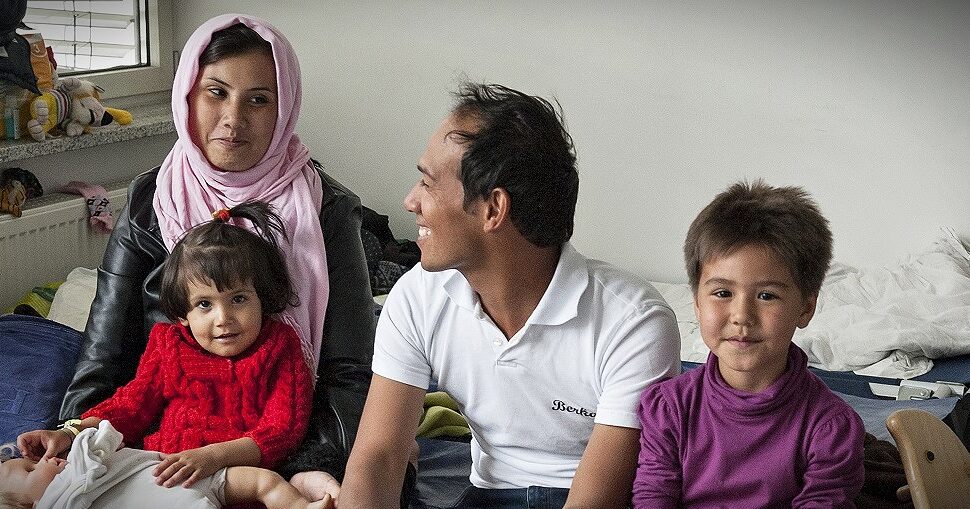Refugees and Asylum Seekers: A report released this month by the U.S. Department of Health and Human Services (HHS) found that refugees and asylees have generated tens of billions of dollars more in local, state, and federal tax revenues over the last 15 years than they have cost in direct government services—ultimately representing a net fiscal gain at all levels of government.
From 2005 to 2019, refugees and asylees paid a total of $123.8 billion more in taxes than they cost in government services, for a net fiscal gain of $31.5 billion to the federal government and $92.3 billion to state and local governments combined. Refugees and asylees paid an estimated $363 billion to the federal government through payroll, income, and excise taxes, and $218 billion to state and local governments through income, sales, and property taxes.
Even when factoring in their spouses and children under 18, many of whom are U.S. citizens, refugees and asylees still provided a net fiscal gain, costing $723.4 billion in government services yet paying $739.4 billion in tax revenue, for a net gain of $16 billion.
“This historic federal study is important data-driven evidence demonstrating that over time, refugees, asylees, and their immediate families have made significant positive fiscal contributions to our country,” HHS Secretary Xavier Becerra said in the agency press release. “I hope this report becomes a key reference for decision-makers in all levels of government when it comes to refugee resettlement.”
The Office of the Assistant Secretary for Planning and Evaluation (ASPE) report considered all refugees and asylees who had arrived since 1980. A refugee is defined as someone who cannot return to their homeland for fear of persecution due to race, religion, nationality, membership in a particular social group, or political opinion, and who applies to come to the United States from another country. An asylee meets the same definition but seeks admission from within the United States or at a port of entry. Between 1990 and 2022, the United States welcomed more than 2.1 million refugees and more than 800,000 asylees.
While recently arrived refugees and asylees tend to have lower employment levels and household incomes than the U.S. population as a whole, after 10 years their incomes are comparable and their employment rates exceed that of the U.S. average. The report found that in an average year, 57.2% of people in the United States of prime working age, or between the ages of 25 and 64, were employed full-time. Among prime-working-age refugees and asylees, just 43% of those who had arrived within five years were employed full-time. However, those who had been in the United States for 10 years or more had a 60% full-time employment rate, slightly higher than the U.S. average.
Similarly, while refugees and asylees in the country for less than five years had higher annual poverty rates than the U.S. average (33.9% vs. 13.2%), those rates had dropped to 14.4% on average for refugees and asylees in the country 10 years or more. After 10 years, the average annual household income of refugees and asylees was not statistically different from the average for all U.S. residents, approximately $59,000. Their net fiscal impacts were also comparable. Over the 15 years, refugees and asylees paid slightly more per capita in annual taxes than the U.S. population as a whole ($12,989 vs $12,674) and used slightly less per capita in annual government expenditures ($10,222 vs $10,416).
Average Annual Per Capita Net Fiscal Impact for Refugees, Asylees and Total U.S. Population, 2005-2019
“This report contributes to what we know about our financial return on assisting new humanitarian arrivals,” Miranda Lynch-Smith, ASPE’s deputy assistant secretary for human services policy, stated in the release. “This study opens the door for future research into the impact of different groups of refugees and asylees.”The previous administration had commissioned an internal study in 2017 to examine the costs of refugee resettlement to support efforts to dramatically reduce the number of refugee admissions, according to The New York Times, which obtained a leaked copy of the unreleased report.
However, the 2017 report, which studied the fiscal impact of refugees—defined to also include asylees, Cuban/Haitian entrants, victims of trafficking and certain Special Immigrant Visa holders—from 2005 to 2014, found that refugees contributed an estimated $269.1 billion in revenue over the decade while costing the government $206.1 billion—for a net fiscal gain of $63 billion.
The previous administration had aimed to argue that refugees were a fiscal drain, due to government expenditures on cash benefits, food allowances, medical care, and other government services. Refugees typically use or have access to these benefits early in their resettlement. However, as various studies have found, they quickly more than pay that money back.
The number of refugees worldwide has more than tripled over the last decade, to a record 36.4 million persons, 41% of whom are children. Yet over the same period, the number of refugees admitted to the United States has lagged. In fiscal year 2013, 69,926 refugees were admitted; in FY 2023, just 60,014 refugees were admitted, despite a cap of 125,000. Resettlement programs have struggled to rebuild, and thus ease logjams, following severe budget cuts made in recent years. The current administration has used humanitarian parole to admit others displaced by wars in Afghanistan and Ukraine, but we need to ask whether this is enough.
If humanitarian considerations alone are not reason enough to support strengthening and expanding the U.S. refugee program, then we must consider the economic benefits. As this HHS study makes clear, refugees and asylees may require an upfront investment by the government at all levels, but those investments quickly pay off.













